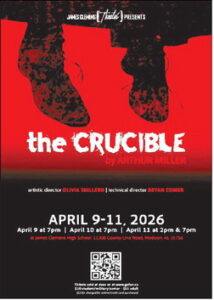Baby copperhead season in full swing
A few seasonal changes come along with autumn: lower temperatures, football games and sightings of baby copperheads.
Local wildlife and forestry experts advise to watch out for baby and adult copperheads this time of year. A middle Tennessee woman dealt with the snakes’ threat last month when her dog suffered complications from a bite.
“Copperheads can be difficult to see because their coloration and patterns blend in with the habitat,” said Nick Wirwa, a wildlife biologist at the Wheeler National Wildlife Refuge. “They have a pattern that is a series of dark, chestnut-brown or reddish-brown crossbands, each shaped like an hourglass, dumbbell or saddlebag.
“However, the young can be distinguished with a bright yellow-greenish tail.”
The young copperheads leave their mothers in the fall in the South and start learning how to fend for themselves. The colder weather this week may reduce the presence of baby copperheads, but they’ll remain visible until around November, when their activity should dramatically fall.
Wirwa said there have been an “about average amount of sightings” of copperheads at the refuge recently.
Baby copperheads trick prey into thinking their yellow-green tail is a worm, ambushing small prey until they get bigger and can go after more substantial prey.
Copperheads, with deep pits between their yellow catlike eyes and their nostrils, are members of a class of venomous snakes called “pit vipers.”
Wirwa said to be careful around brush piles or old lumber piles and to avoid reaching under or stepping over bushes, rocks or flower pots without looking first. He said copperheads can be somewhat common around unkempt yards, so he urges people to keep outdoor spaces tidy to keep the snakes away.
Logan Barber, a terrestrial zoologist for the Tennessee Valley Authority, said, “A lot of times they will just lie really still. They tend to just hope you don’t see them.”
Whereas rattlesnakes and cottonmouths have other methods of defense, the copperhead only has camouflage and venom.
Between 7,000 and 8,000 people are bitten by poisonous snakes yearly, but only about five people die, according to the Centers for Disease Control and Prevention.
“The number one thing (if you’re bitten) is to remove yourself from the area and collect yourself for just a moment,” Barber said.
If the snake is still in the area, it’s smart to get a picture from a safe distance to discern if the snake is venomous, but hospitals use the same antivenom for most Alabama venomous snakes.
“No reason to catch it or kill it,” Barber said. “If so, you’ll just end up with a second bite or get injured in some kind of way.”
If you’re out of phone service range or a good distance from a place where emergency medical services can reach you, stay calm, try not to overexert yourself and keep trying to reach a point where you can contact EMS.
“If you’re in the woods, you’re going to have to do the best you can,” he said.
If you don’t call 911, he said it’s a good idea to call the hospital ahead and let them know you might have been bitten by a venomous snake.
—
Kill a snake?
But is the old Southern adage that “the best snake is a dead one” the best advice?
Wirwa says it isn’t.
“While it may be people’s tendency to want to kill snakes, the best thing to do is leave it alone,” he said. “If left alone, they’re not an issue and will leave the area most of the time.”
Plus, copperheads “play a vital role in the food chain,” he said. The snakes primarily dine on rodents, but they also eat frogs, lizards, smaller snakes and cicadas, helping manage some pest populations.
If you find a copperhead in your house, Barber says to call a professional wildlife removal service.
“I don’t think they’re bad guys,” said Alex Horn, Franklin County forester for the Alabama Forestry Commission. “I think that everything that lives and breathes in our state has a reason to be there.”
He said he’d advise against killing a copperhead after finding one, especially when out hiking or enjoying nature.
“You don’t want that snake coming into your house,” he said. “You’re essentially in his house, in his habitat.” He said the cold snap early this week should reduce the threat posed by baby copperheads.
Copperheads enjoy sunbathing on cool afternoons, but they generally avoid humans and larger animals such as house pets.
“The main thing is to leave them alone and ensure your pets not bother them,” Wirwa said.
—
Dog bitten
Jamie Moss of Cookeville, Tennessee, let her small dog, Marley, outside the day before Labor Day and didn’t even realize there was a copperhead in her yard.
“I never saw the snake, and I don’t think (my dog) saw the snake,” she said. “She just turned around like she wanted to go back in the house.”
After she discovered her dog bleeding from her nose, Moss’s husband discovered a copperhead outside.
It being a holiday weekend, finding a veterinary hospital was difficult enough on its own, but most animal hospitals in her area did not have the expensive antivenom. She was about to make the long drive to Knoxville, Tennessee, before a local vet said they had ordered more antivenom the previous week.
“The low end (price estimate) was $1,600, and the high end was $2,600,” she said. “I said it didn’t matter.
“She was swelling everywhere and having difficulty breathing, and they said that if she could make it through the night and didn’t have any complications from the antivenom she’d be fine.”
After two days in intensive care, Marley was released with pain medication and antibiotics.
“(The swelling) looked like she had a softball under her chin,” Moss said.
She said after a couple of days Marley began to feel better, and within two days the swelling had gone down. The scab on her nose stayed for about two weeks, but the hair hasn’t grown back on that spot yet. Veterinarians told Moss the hair might not grow back due to the venom.
In the following week, Moss and her neighbors found nine more copperheads: eight adults and one baby.
—
Cooler conditions
Horn said Tuesday’s freeze likely greatly affected the baby copperhead population.
“A lot of them, if they’re caught out (in the cold) they’ll die, but a lot of them will be able to make it back underground,” he said. “But their chances significantly drop with this cold snap we’ve gotten.”
While Alabama Forestry Commission forester Robert Maddox hasn’t seen many copperheads this season, he said one shouldn’t discount the idea of copperheads still being around.
“Keep in mind they like to hide,” he said. “There may be a wildfire when we are there, or they sensed us tromping through the woods and left.”
As temperatures continue to drop, copperheads will eventually find dens inside tree stumps, piles of rocks or log piles to sleep off the winter in a rest similar to hibernation called brumation.
Still use caution when sticking your hand in a spot a snake might like — a snake in brumation can still strike.
















